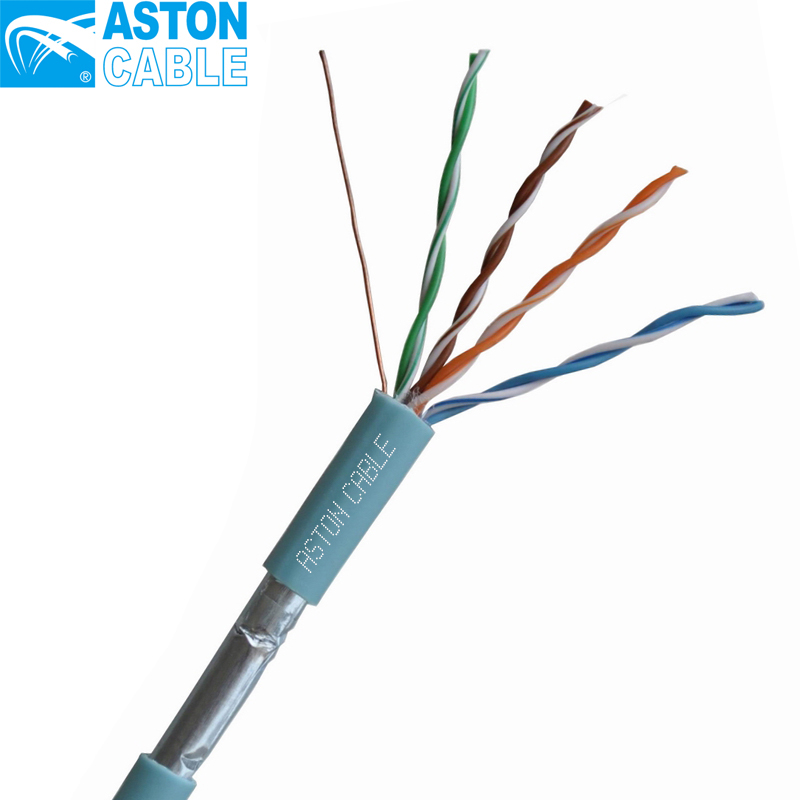Introduction to Cat5 LAN Cables
Local Area Networks (LAN) form the backbone of modern digital communication, facilitating everything from internet browsing to intricate enterprise solutions. Among the various types of LAN cables available, the Cat5 LAN cable holds a distinct position due to its early introduction and widespread use. The term "Cat5" refers to Category 5, a classification under the Ethernet standards developed by the Telecommunications Industry Association (TIA)/Electronic Industries Association (EIA). This article delves into the technical specifics, usage scenarios, and comparative merits of Cat5 LAN cables, providing clarity for wholesale buyers, manufacturers, suppliers, and end-users.
Technical Specifications of Cat5 Cables
● Structure and Materials
A Cat5 LAN cable typically consists of four twisted pairs of copper wires, encased in a protective plastic sheath. The twisting of pairs minimizes electromagnetic interference, ensuring efficient data transmission. Copper is preferred for its excellent conductivity.
● Composition and Technological Features
The use of twisted pairs is integral to the cable's design, reducing signal degradation over distances. Each pair of wires is uniquely colored for easy identification during installation and troubleshooting.
Data Transmission Capabilities
● Maximum Speed: Up to 100 Mbps
Cat5 LAN cables are designed to support data transfer speeds of up to 100 megabits per second (Mbps). Though this might seem modest compared to modern standards, it is sufficiently robust for many residential and small business applications.
● Bandwidth: Up to 100 MHz
The Cat5 cable offers a bandwidth capacity of up to 100 MHz, which is adequate for transmitting signals over relatively short distances without significant loss of quality. This bandwidth is pivotal in handling various data forms, from voice to video streaming, efficiently.
Types of Cat5 Cables
● Unshielded Twisted Pair (UTP)
Unshielded Twisted Pair (UTP) Cat5 cables are the most common type used in LAN setups. They lack an additional shielding layer, making them less expensive and easier to install.
● Shielded Twisted Pair (STP)
For environments with higher electromagnetic interference (EMI),Shielded Twisted Pair (STP) Cat5 cables are preferable. The extra shielding layer protects against external noise, ensuring more stable data transmission.
Connectors and Compatibility
● RJ-45 Connectors
Cat5 LAN cables employ RJ-45 connectors, which are standardized interfaces for network connectivity. These connectors are ubiquitous, ensuring compatibility across various network devices.
● Compatibility with Ethernet Jacks
These cables are fully compatible with standard Ethernet jacks, making them versatile and user-friendly. Whether setting up a new network or expanding an existing one, Cat5 cables provide hassle-free connectivity.
Usage Scenarios
● Typical Environments for Cat5 Cables
Cat5 cables are ideal for home and small business networks, offering reliable performance in environments with low to moderate data traffic. They are also used in academic institutions, libraries, and other settings requiring stable internet access.
● Applications Beyond Standard Networking
Apart from conventional networking, Cat5 cables find applications in telecommunication setups and even in some types of audio and video transmission systems. Their adaptability makes them a valuable choice for diverse technological solutions.
Advantages and Limitations
● Low Cost and Accessibility
One of the significant advantages of Cat5 LAN cables is their affordability. They offer a cost-effective solution for basic networking needs, making them accessible for a broad audience.
● Limitations Compared to Newer Standards
While Cat5 cables provide stable performance, they are less capable than newer standards like Cat6 and Cat7. Their limited data transfer speed and bandwidth might not suffice for high-demand applications, such as large-scale enterprise networks or advanced multimedia setups.
Installation Considerations
● Bending Radius and Physical Durability
When installing Cat5 LAN cables, it is essential to consider the bending radius to prevent physical damage and maintain performance integrity. Over-bending can lead to signal loss and potential cable failure.
● Tips for Proper Installation and Maintenance
To ensure optimal performance, adopt best practices such as proper cable routing, securing connections, and regular maintenance checks. Avoiding physical stress and environmental hazards will prolong the cable's lifespan.
Comparisons with Other Ethernet Cables
● Differences Between Cat5, Cat5e, and Cat6
Cat5e (enhanced) and Cat6 cables offer improved performance over standard Cat5. Cat5e supports higher data rates and reduced crosstalk, while Cat6 provides even greater speed and bandwidth capabilities, making these choices more suitable for demanding network environments.
● Choosing the Right Cable for Your Needs
Selecting the appropriate LAN cable depends on specific requirements such as the expected data load, network size, and budget constraints. Evaluate the pros and cons of each category to make an informed decision.
Future of Cat5 Cables
● Relevance in Modern Networking
Despite the advent of advanced cable categories, Cat5 LAN cables remain relevant for specific applications, particularly in cost-sensitive and less demanding environments. Their continued use underscores their durability and reliability.
● Potential Upgrades and Replacements
Given the evolution of network requirements, upgrading to newer categories like Cat5e or Cat6 might be necessary over time. However, Cat5 cables still serve as a reliable fallback option for various setups.
Company Profile: Aston Cable
Aston Cable factory is located in Hangzhou Linan City, just two hours from Shanghai Pudong Airport or Xiaoshan Airport by car. With over 20 years of experience in cable manufacturing, Aston Cable specializes in communication cables with advanced production lines and rigorous quality control systems. Covering 10,000 square meters, the factory produces a range of products, including Coaxial Cable, Composited Cable, LAN Cable, alarm cable, and other security cables. Committed to enhancing customer satisfaction, Aston Cable remains a trusted partner in securing your home and data.

Post time: 2024-09-12 21:19:45





